A Novel Way to Enhance the Spark Plasma-Assisted Ignition for an Aero-Engine Under Low Pressure
Abstract
1. Introduction
2. Experimental Setup and Procedure
3. Results and Discussion
3.1. Discharge Characteristics of the SI and the MDJS
3.2. Spark Characteristics of the SI and the MDJS
3.3. Effect of the MDJS on the Ignition Process and the Ignition Limit Extension
4. Conclusions
- (1)
- The total arc discharge energy of the MDJS increased by approximately 14% in comparison to the conventional SI.
- (2)
- The MDJS generated a much larger spark plasma volume and a fast growing spark kernel in comparison to the conventional SI. Moreover, the MDJS with a higher spark plasma penetration depth not only helped prolong the service life of the igniter but also helped increase the probability of contact with the flammable hydrocarbon mixture at stoichiometric ratio, which contributed to the secondary ignition ability of the igniter.
- (3)
- The burning velocity of the flame ignited by the MDJS was faster than that ignited by the SI.
- (4)
- Using the multichannel discharge jet-enhanced spark, the lean ignition limit of a model swirl combustor was extended 24% from 0.034 to 0.026 at 25 m/s with 20 °C kerosene. If fueled by −30 °C kerosene, the lean ignition limit was extended 17% from 0.075 to 0.062 at 12 m/s.
Author Contributions
Funding
Conflicts of Interest
References
- Sun, W.; Ju, Y.J. Nonequilibrium plasma-assisted combustion: A review of recent progress. Plasma Fusion Res. 2013, 89, 208–219. [Google Scholar]
- Lin, B.; Wu, Y.; Zhang, Z.; Chen, Z. Multi-channel nanosecond discharge plasma ignition of premixed propane/air under normal and sub-atmospheric pressures. Combust. Flame 2017, 182, 102–113. [Google Scholar] [CrossRef]
- Huang, S.; Wu, Y.; Song, H.; Zhu, J.; Zhang, Z.; Song, X.; Li, Y. Experimental investigation of multichannel plasma igniter in a supersonic model combustor. Exp. Therm. Fluid Sci. 2018, 99, 315–323. [Google Scholar] [CrossRef]
- Ballal, D.; Lefebvre, A.H. Ignition of Liquid Fuel Sprays at Subatmospheric Pressures. Combust. Flame 1978, 31, 115–126. [Google Scholar] [CrossRef]
- Chen, Z.; Ju, Y. Theoretical analysis of the evolution from ignition kernel to flame ball and planar flame. Combust. Theory Model. 2007, 11, 427–453. [Google Scholar] [CrossRef]
- Yu, S.; Xie, K.; Tan, Q.Y.; Zheng, M.B. Ignition Improvement of Premixed Methane-Air Mixtures by Distributed Spark Discharge. In Proceedings of the JSAE/SAE 2015 International Powertrains, Fuels & Lubricants Meeting, Kyoto, Japan, 1–4 September 2015. [Google Scholar]
- Nakamura, N.; Baika, T.; Shibata, Y. Multipoint Spark Ignition for Clean Combustion; SAE Technical Paper 852092; SAE International: Warrendale, PA, USA, 1985. [Google Scholar] [CrossRef]
- Hnatiuc, B.; Hnatiuc, E.; Peller, S.; Chapelle, J. Experimental analysis of a double-spark ignition system. Czechoslov. J. Phys. 2006, 56, 851–867. [Google Scholar] [CrossRef]
- Kuo, S.; Bivolaru, D.; Carter, C.; Jacobsen, L.; Williams, S. Operational Characteristics of a Plasma Torch in a Supersonic Cross Flow. Available online: https://arc.aiaa.org/doi/abs/10.2514/6.2003-1190 (accessed on 1 September 2018).
- Li, F.; Yu, X.; Tong, Y.; Shen, Y.; Jian, C.; Chen, L.; Chang, X. Plasma-assisted ignition for a kerosene fueled scramjet at Mach 1.8. Aerosp. Sci. Technol. 2013, 28, 72–78. [Google Scholar] [CrossRef]
- Takita, K.; Abe, N.; Masuya, G.; Ju, Y. Ignition enhancement by addition of NO and NO2 from a N2/O2 plasma torch in a supersonic flow. Proc. Combust. Inst. 2007, 31, 2489–2496. [Google Scholar] [CrossRef]
- Starikovskaia, S.M. Plasma-assisted ignition and combustion: Nanosecond discharges and development of kinetic mechanisms. J. Phys. D Appl. Phys. 2014, 47, 353001. [Google Scholar] [CrossRef]
- Chintala, N.; Bao, A.; Lou, G.; Adamovich, I.V. Measurements of combustion efficiency in nonequilibrium RF plasma-ignited flows. Combust. Flame 2006, 144, 744–756. [Google Scholar] [CrossRef]
- Nishiyama, A.; Ikeda, Y. Improvement of Lean Limit and Fuel Consumption Using Microwave Plasma Ignition Technology. Available online: https://www.sae.org/publications/technical-papers/content/2012-01-1139/ (accessed on 1 September 2018).
- Fuh, C.A.; Wu, W.; Wang, C. Microwave plasma-assisted ignition and flameholding in premixed ethylene/air mixtures. J. Phys. D Appl. Phys. 2016, 49, 285202. [Google Scholar] [CrossRef]
- Morsy, M.H. Review and recent developments of laser ignition for internal combustion engines applications. Renew. Sustain. Energy Rev. 2012, 16, 4849–4875. [Google Scholar] [CrossRef]
- Brieschenk, S.; O’Byrne, S.; Kleine, H. Laser-induced plasma ignition studies in a model scramjet engine. Combust. Flame 2013, 160, 145–148. [Google Scholar] [CrossRef]
- Zhang, H.; He, L.; Chen, G.; Qi, W.; Yu, J. Experimental study on ignition characteristics of kerosene–air mixtures in V-shaped burner with DC plasma jet igniter. Aerosp. Sci. Technol. 2018, 74, 56–62. [Google Scholar] [CrossRef]
- Read, R.W. Experimental Investigations into High Altitude Relight of a Gas Turbine. Ph.D. Thesis, University of Cambridge, Cambridge, UK, 2008. [Google Scholar]
- Zong, H.; Kotsonis, M. Characterisation of plasma synthetic jet actuators in quiescent flow. J. Phys. D Appl. Phys. 2016, 49, 335202. [Google Scholar] [CrossRef]
- Zhang, Z.; Wu, Y.; Sun, Z.; Song, H.; Jia, M.; Zong, H.; Ling, Y. Experimental research on multichannel discharge circuit and multi-electrode plasma synthetic jet actuator. J. Phys. D Appl. Phys. 2017, 50, 165205. [Google Scholar] [CrossRef]
- Zong, H.; Kotsonis, M. Formation, evolution and scaling of plasma synthetic jets. J. Fluid Mech. 2018, 837, 147–181. [Google Scholar] [CrossRef]
- Henriques, J.; Tatarova, E.; Dias, F.M.; Ferreira, C.M. Microwave N2–Ar plasma torch. II. Experiment and comparison with theory. J. Appl. Phys. 2011, 109, 023302. [Google Scholar] [CrossRef]
- Ju, Y.; Sun, W. Plasma assisted combustion: Dynamics and chemistry. Prog. Energy Combust. Sci. 2015, 48, 21–83. [Google Scholar] [CrossRef]
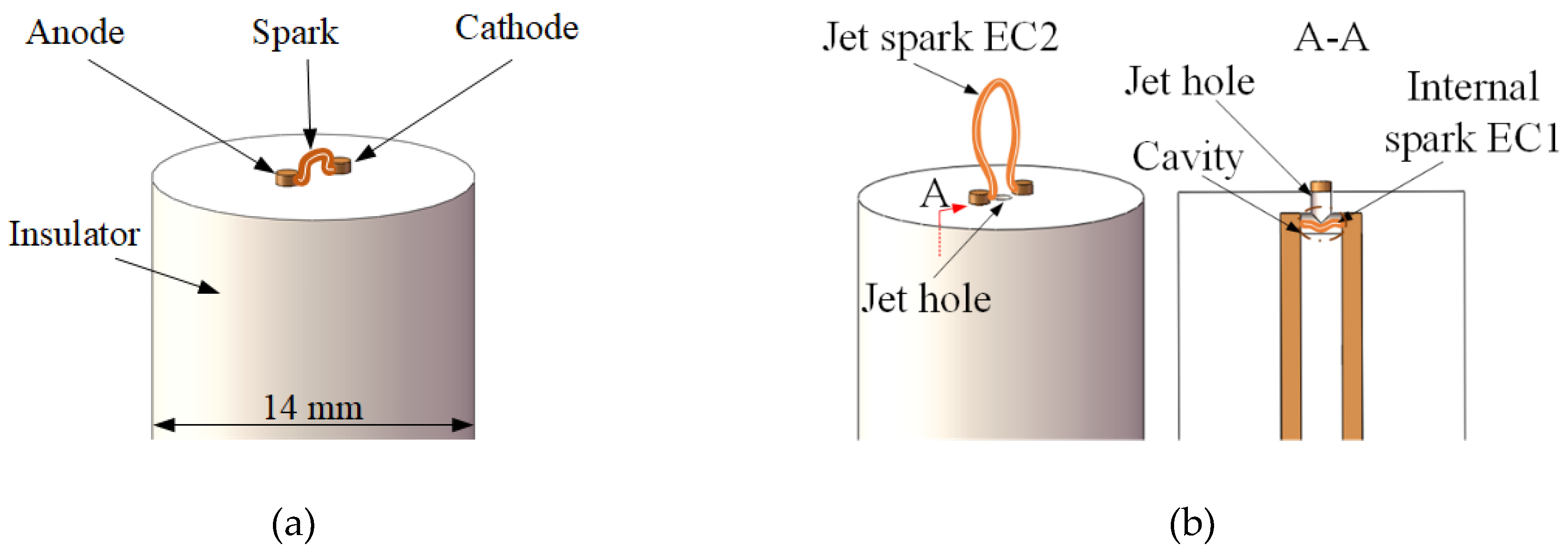
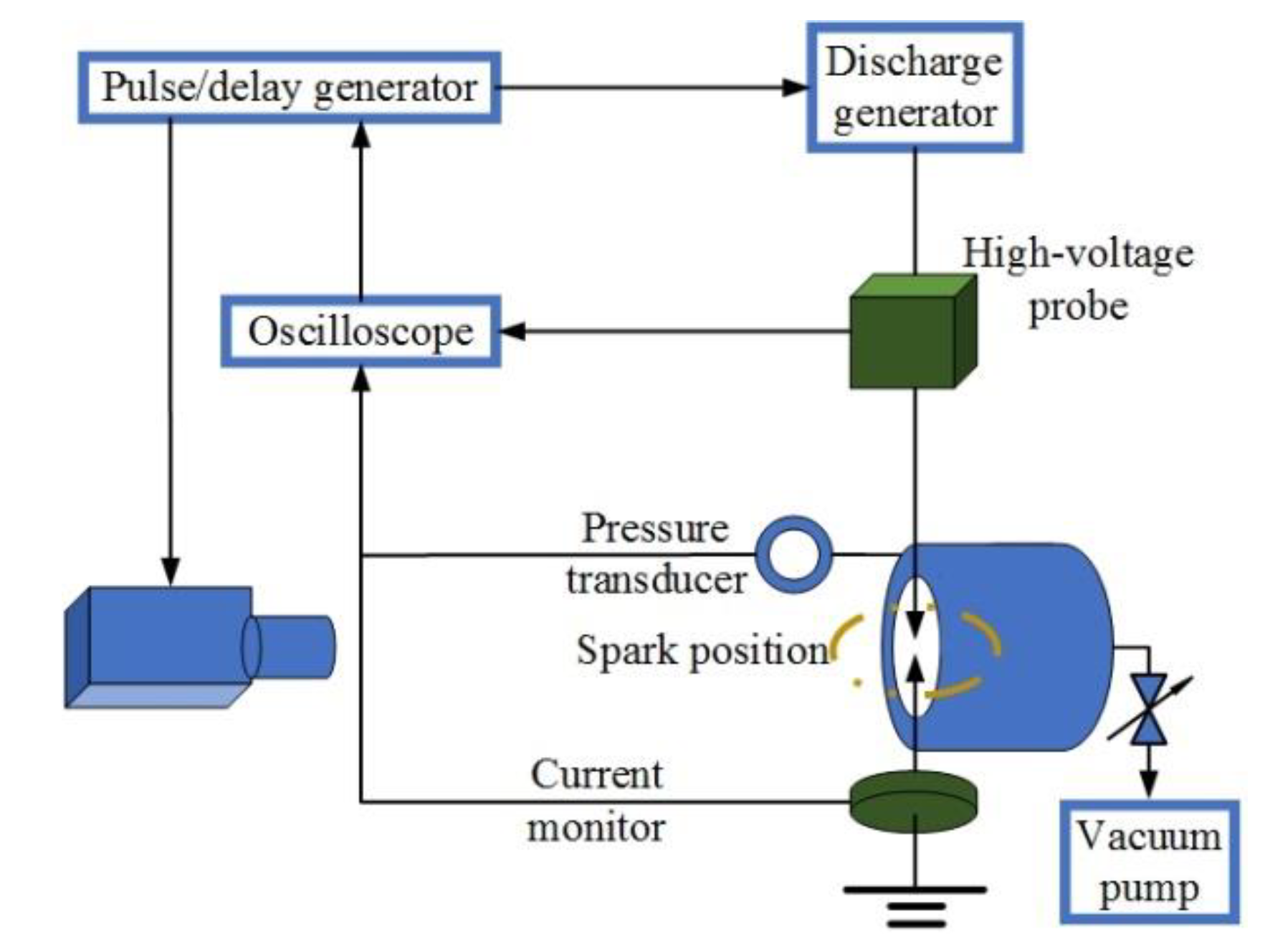
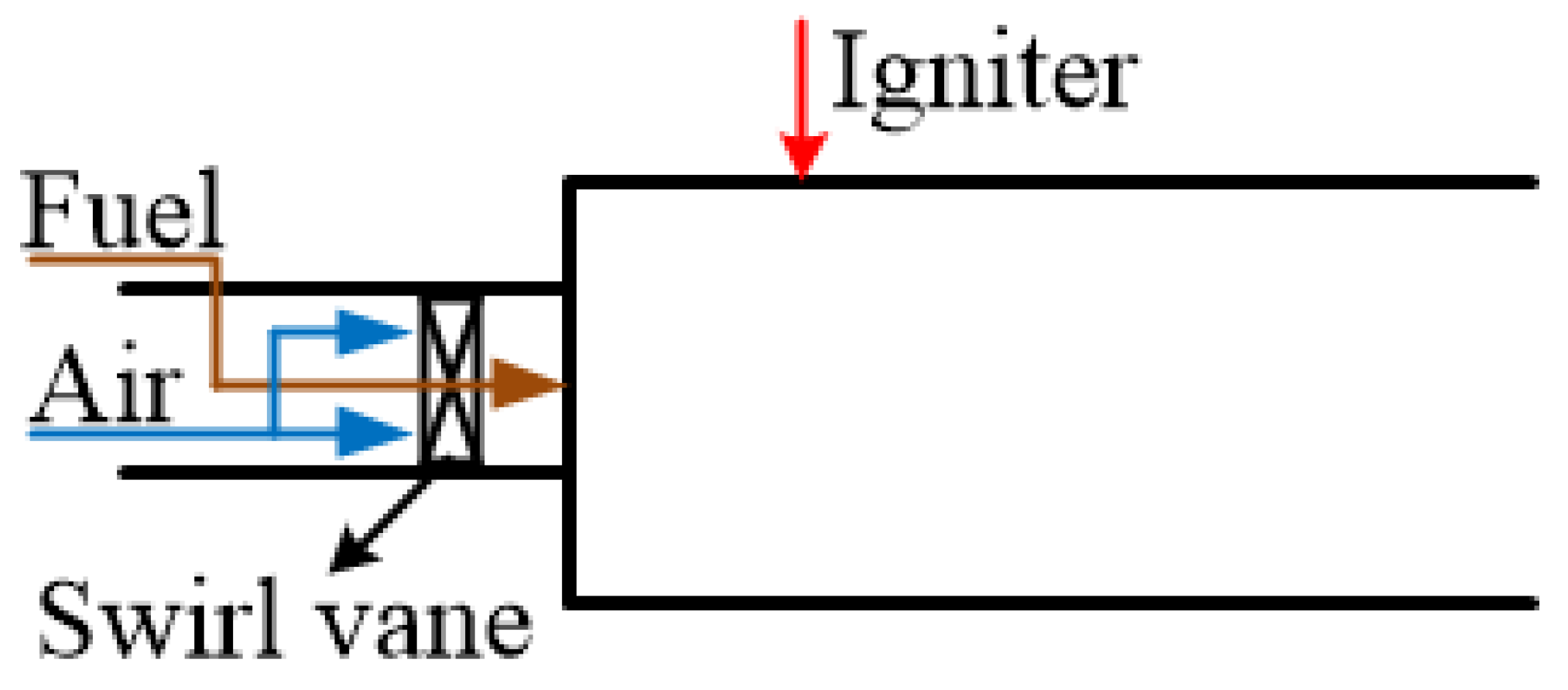
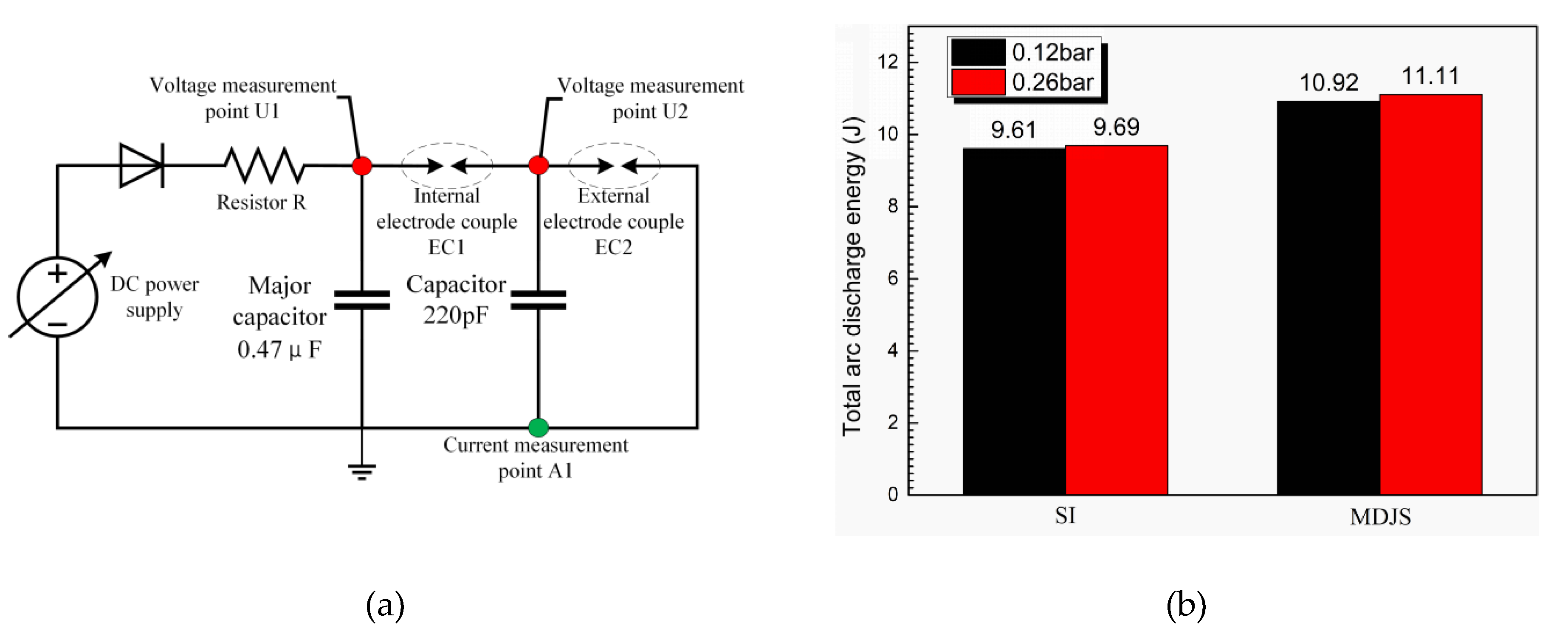
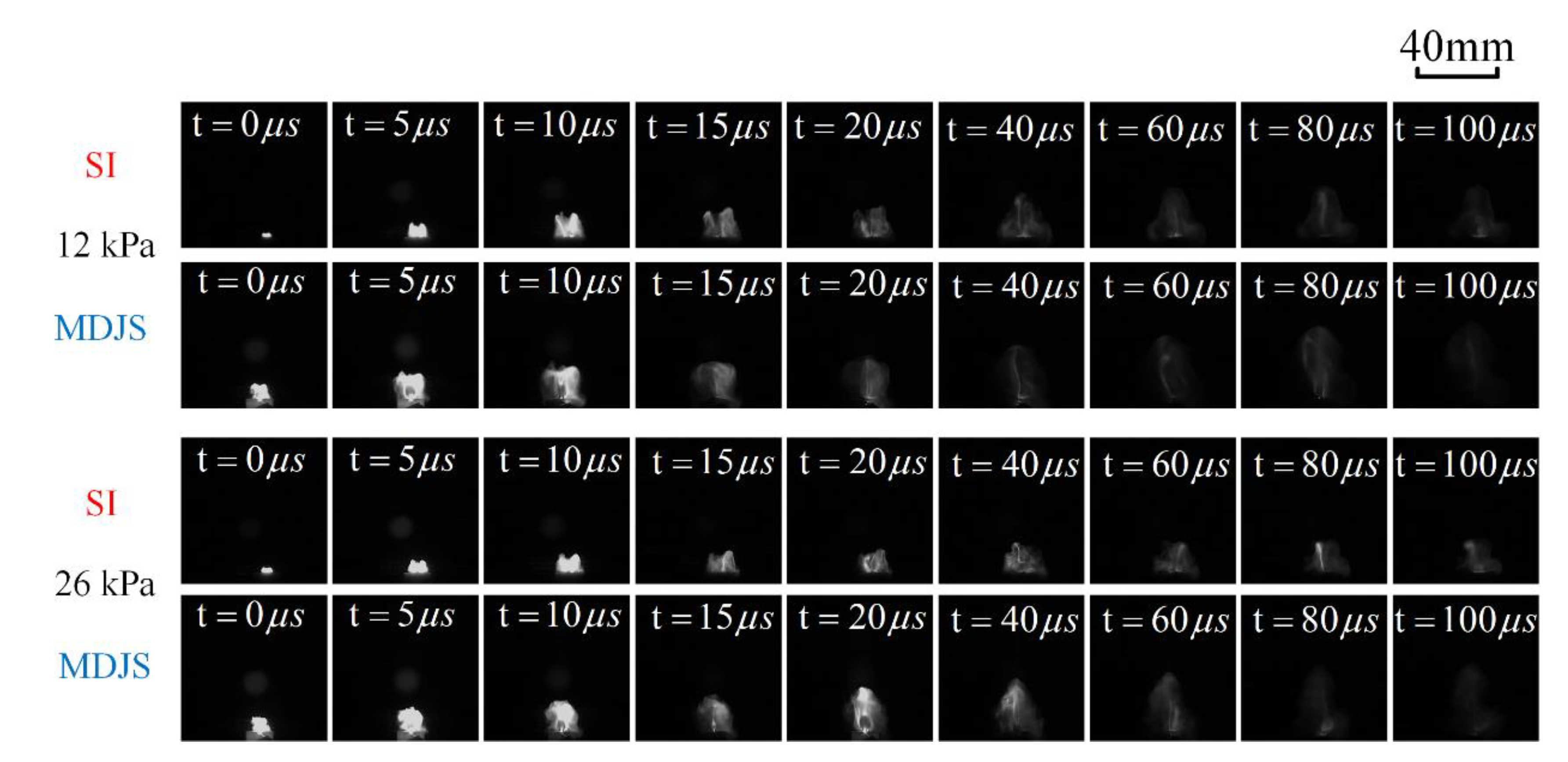

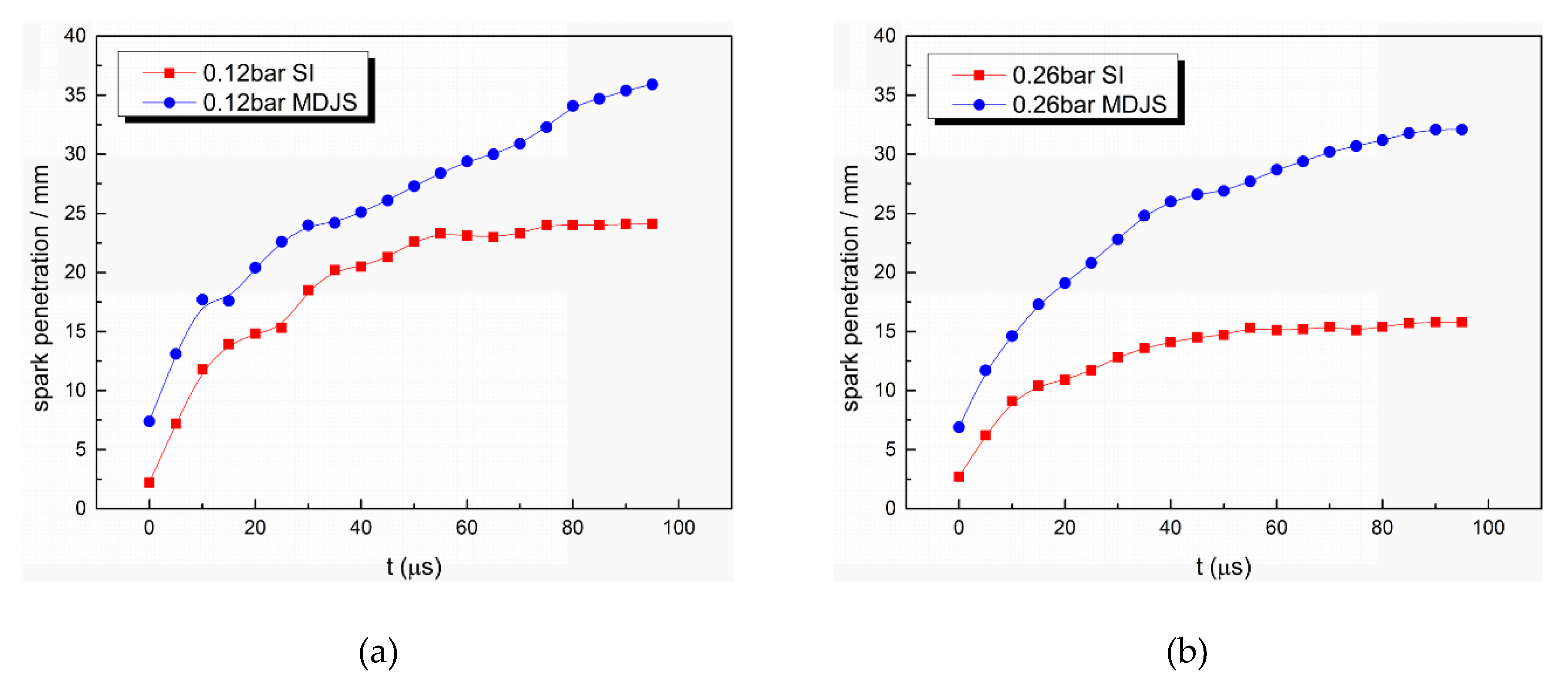
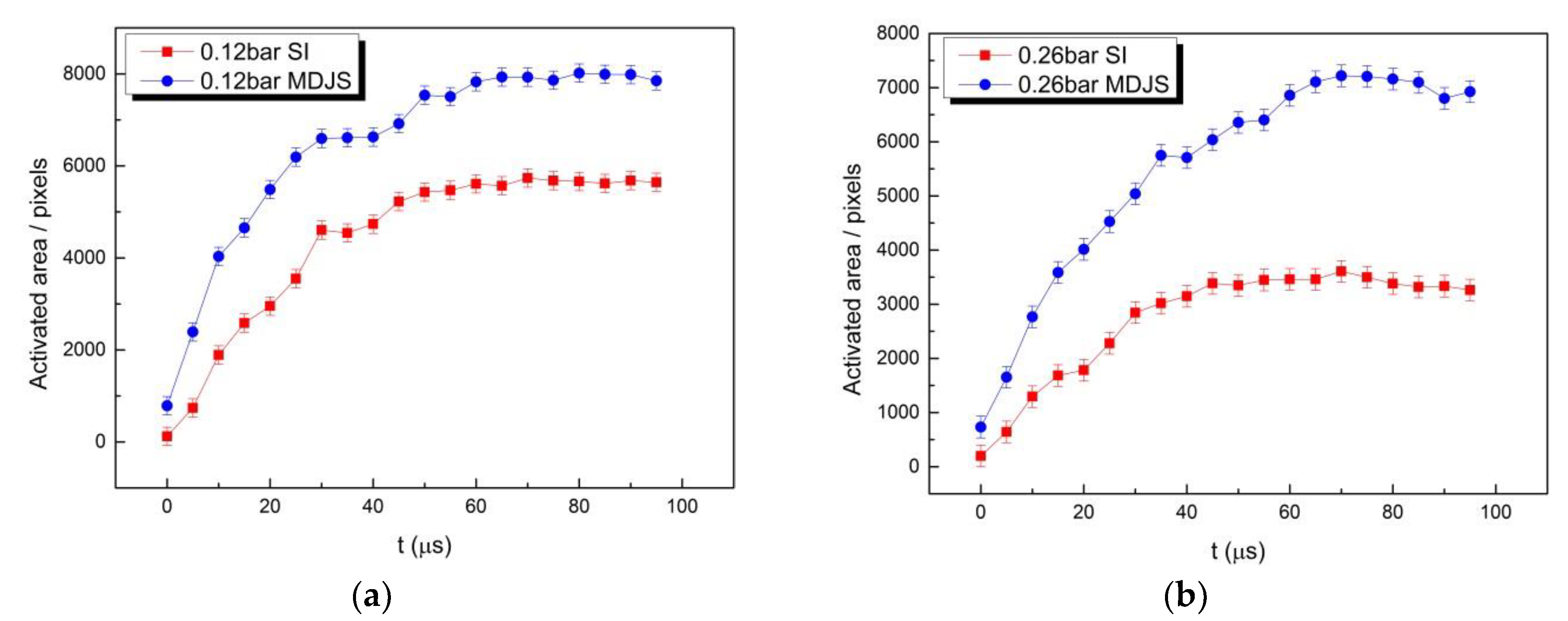
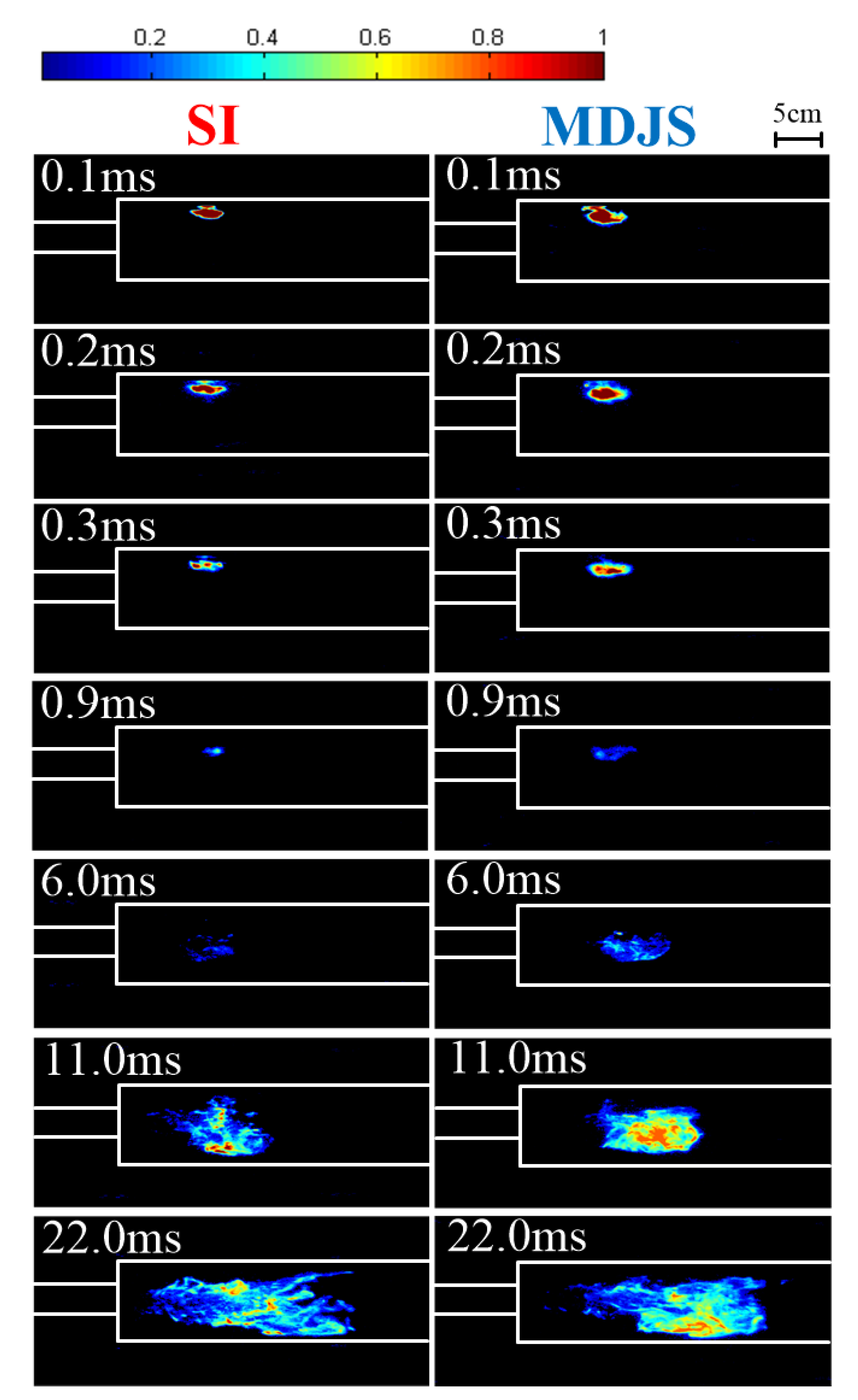
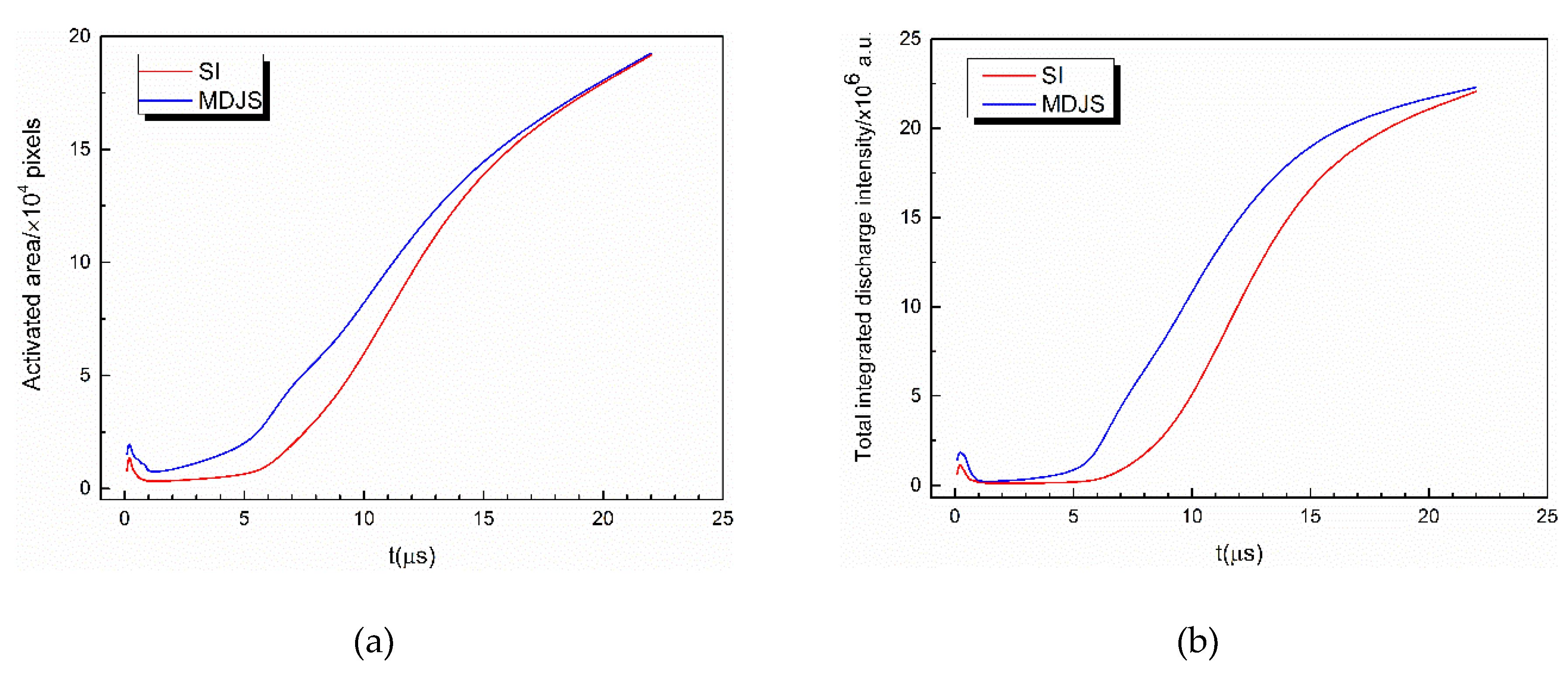
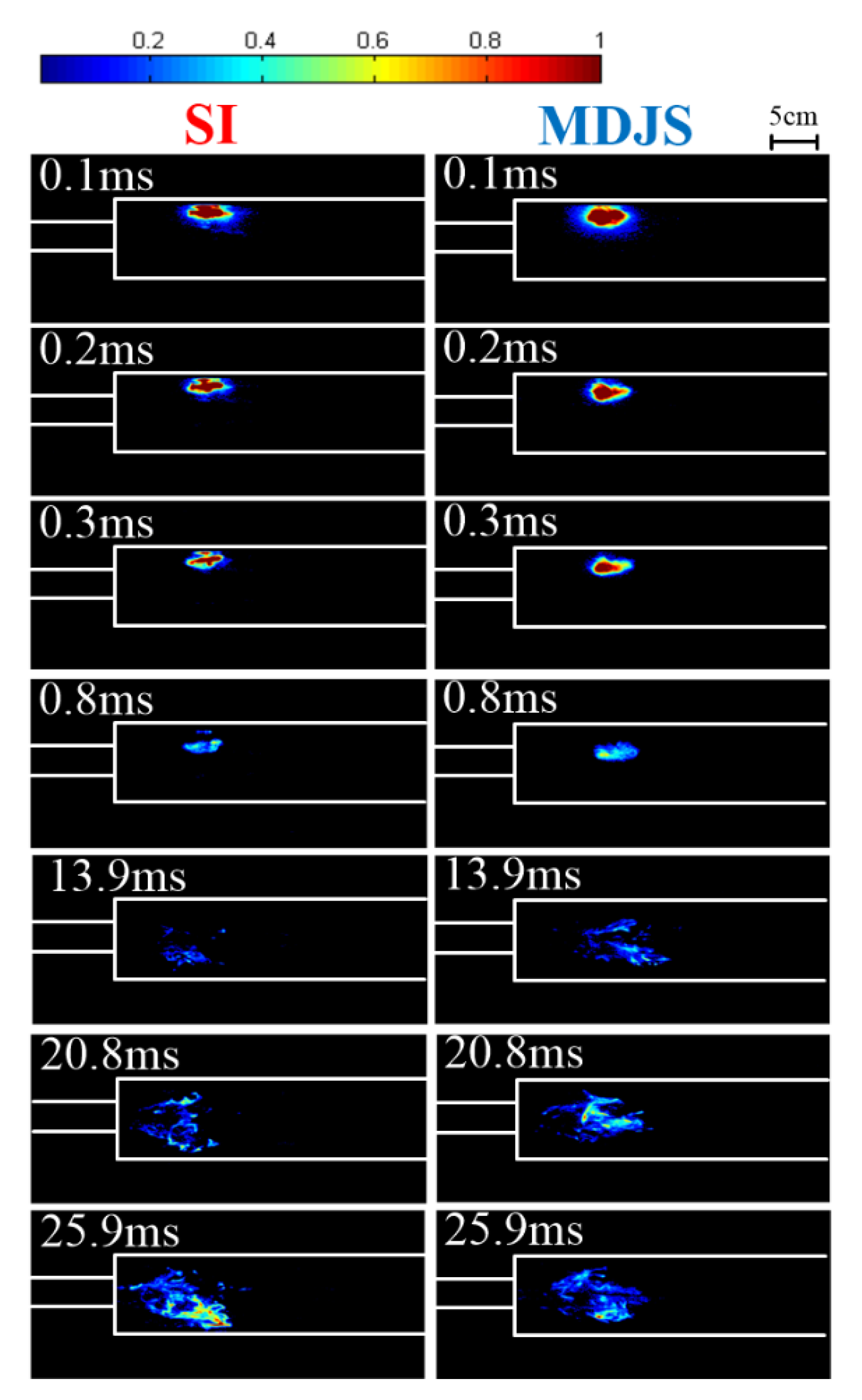
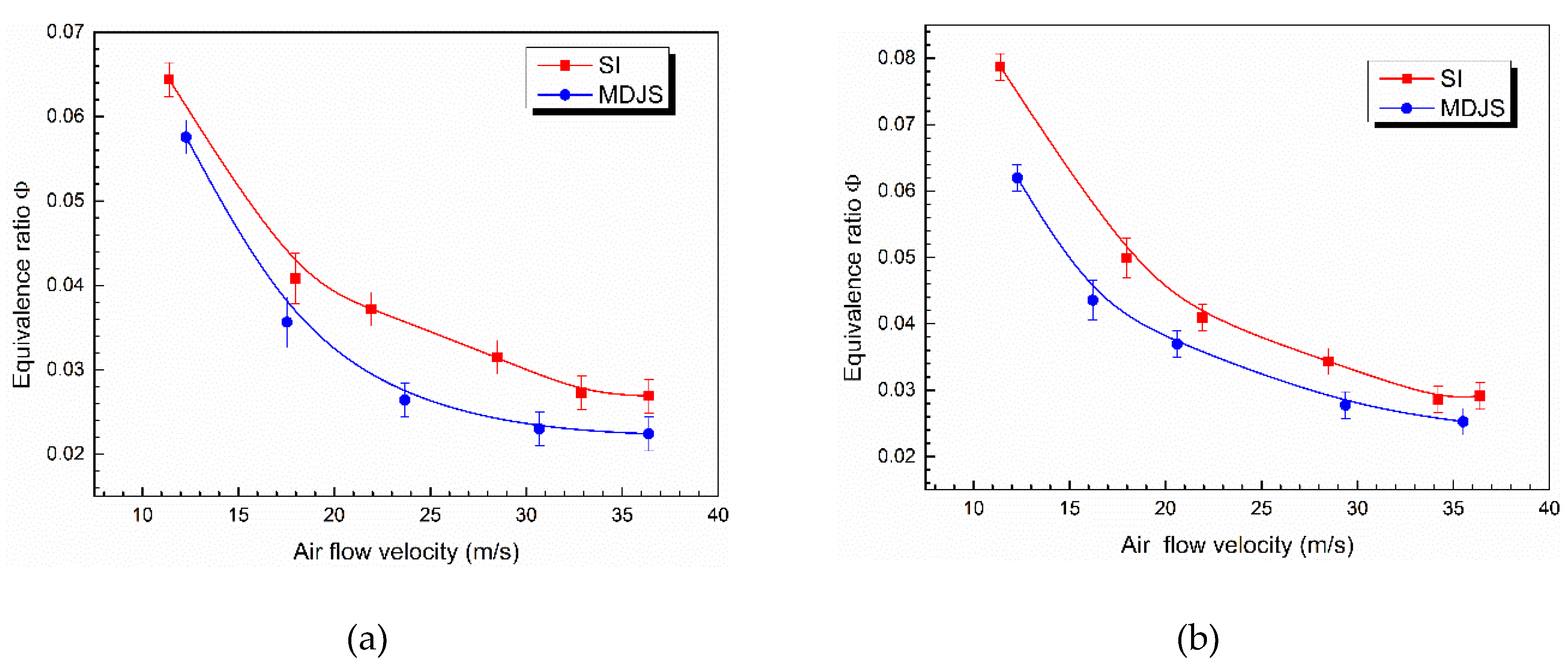
© 2018 by the authors. Licensee MDPI, Basel, Switzerland. This article is an open access article distributed under the terms and conditions of the Creative Commons Attribution (CC BY) license (http://creativecommons.org/licenses/by/4.0/).
Share and Cite
Huang, S.; Zhang, Z.; Song, H.; Wu, Y.; Li, Y. A Novel Way to Enhance the Spark Plasma-Assisted Ignition for an Aero-Engine Under Low Pressure. Appl. Sci. 2018, 8, 1533. https://doi.org/10.3390/app8091533
Huang S, Zhang Z, Song H, Wu Y, Li Y. A Novel Way to Enhance the Spark Plasma-Assisted Ignition for an Aero-Engine Under Low Pressure. Applied Sciences. 2018; 8(9):1533. https://doi.org/10.3390/app8091533
Chicago/Turabian StyleHuang, Shengfang, Zhibo Zhang, Huimin Song, Yun Wu, and Yinghong Li. 2018. "A Novel Way to Enhance the Spark Plasma-Assisted Ignition for an Aero-Engine Under Low Pressure" Applied Sciences 8, no. 9: 1533. https://doi.org/10.3390/app8091533
APA StyleHuang, S., Zhang, Z., Song, H., Wu, Y., & Li, Y. (2018). A Novel Way to Enhance the Spark Plasma-Assisted Ignition for an Aero-Engine Under Low Pressure. Applied Sciences, 8(9), 1533. https://doi.org/10.3390/app8091533



